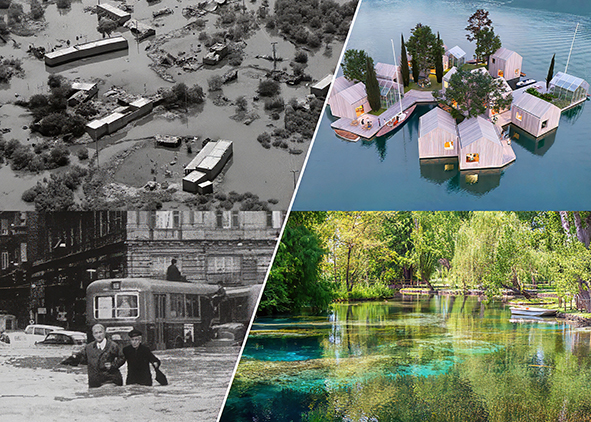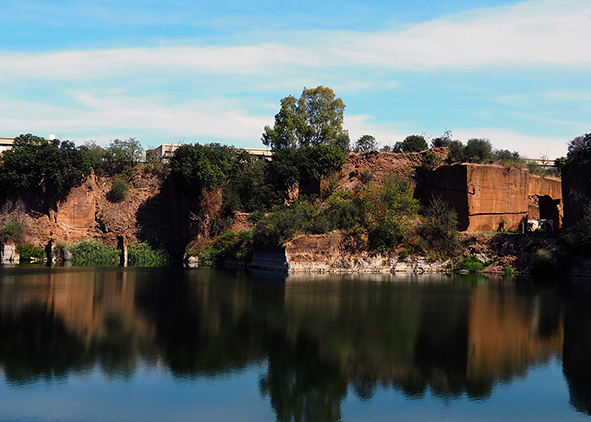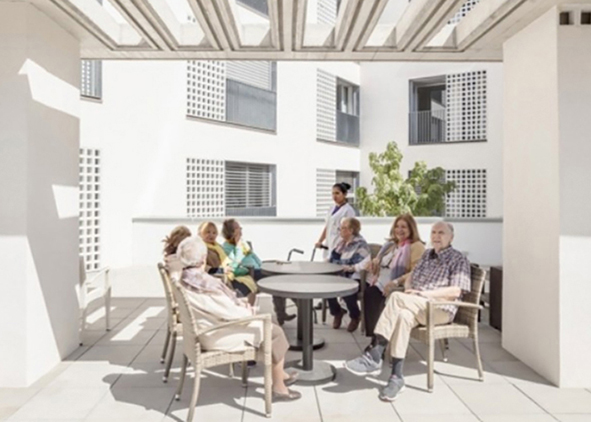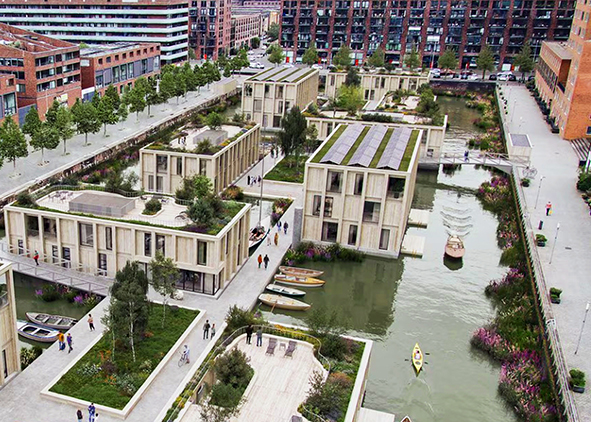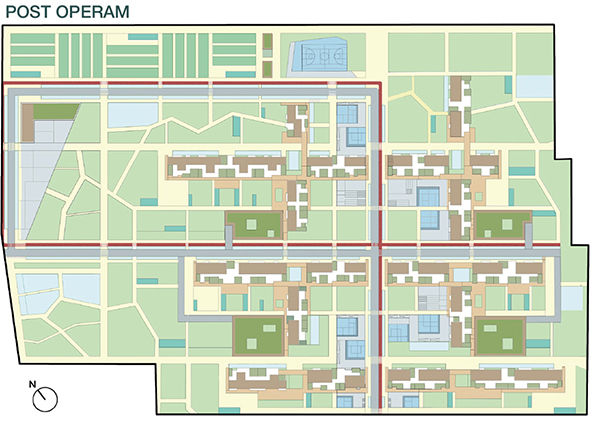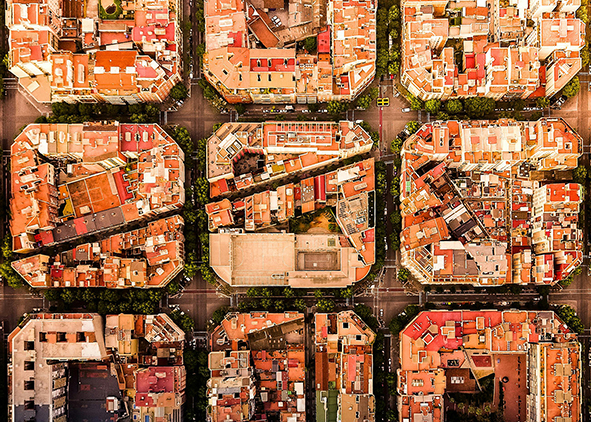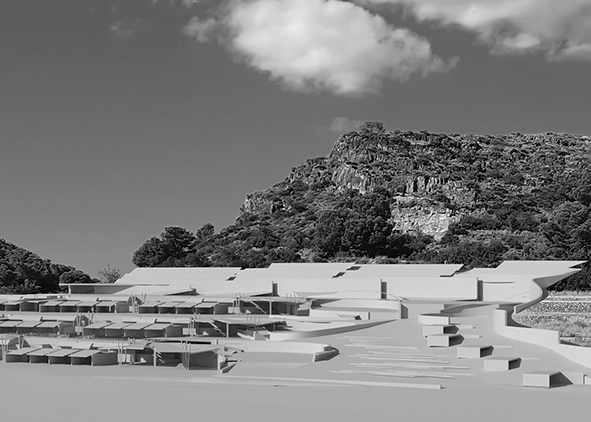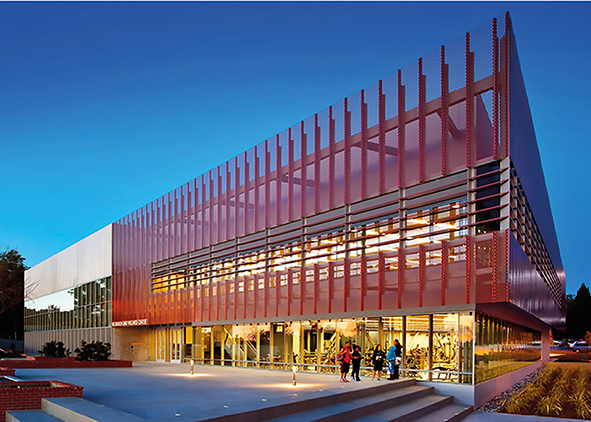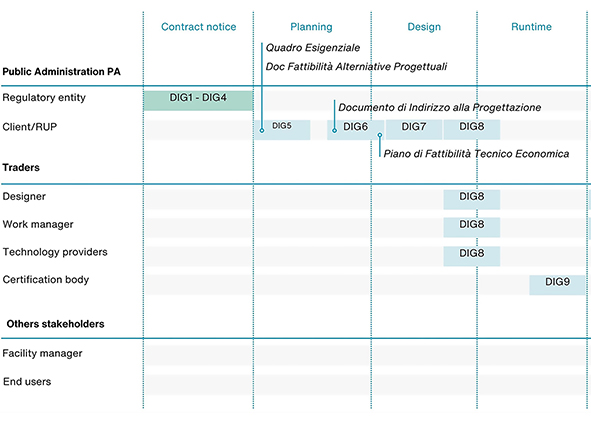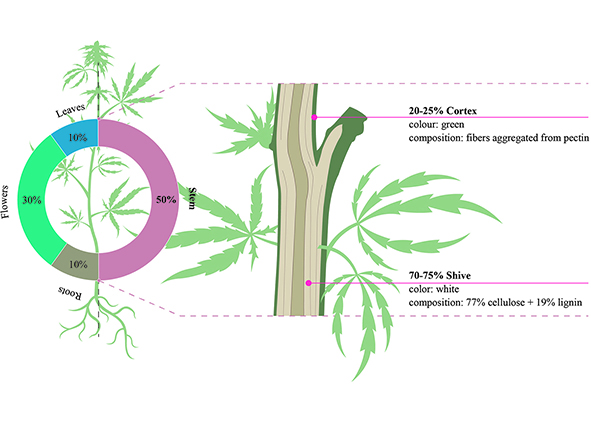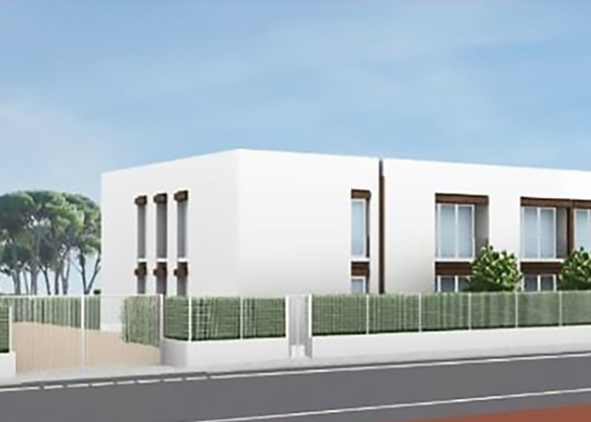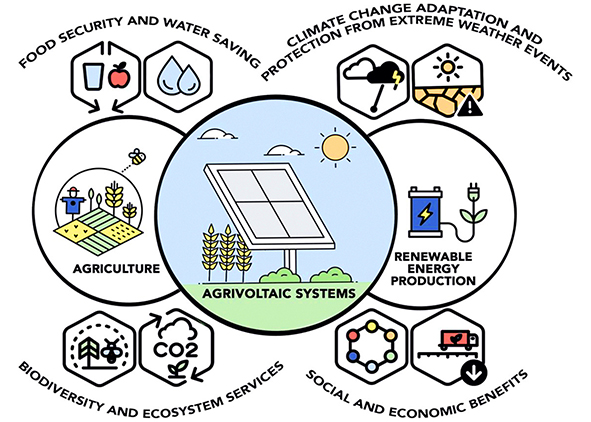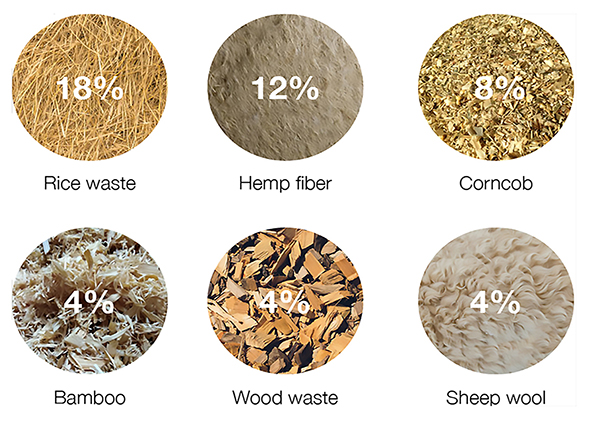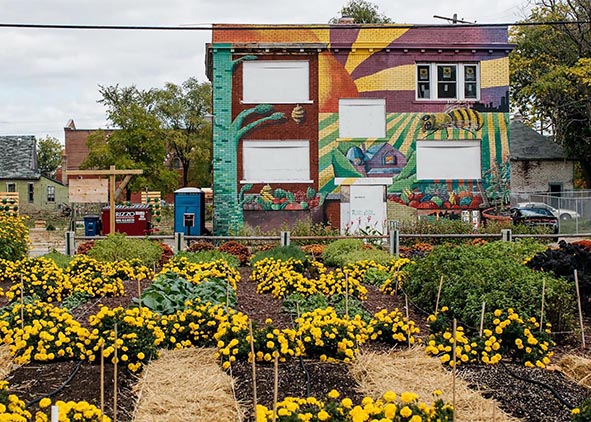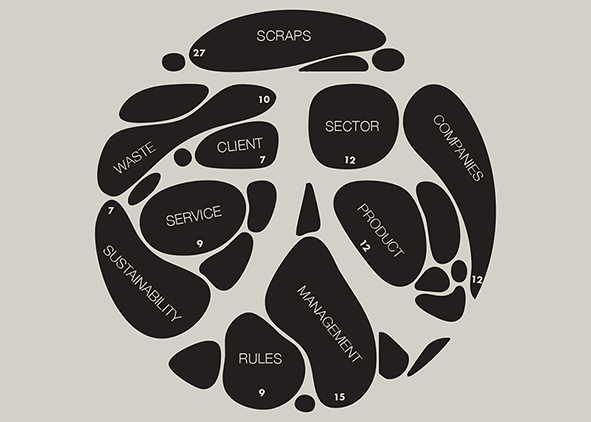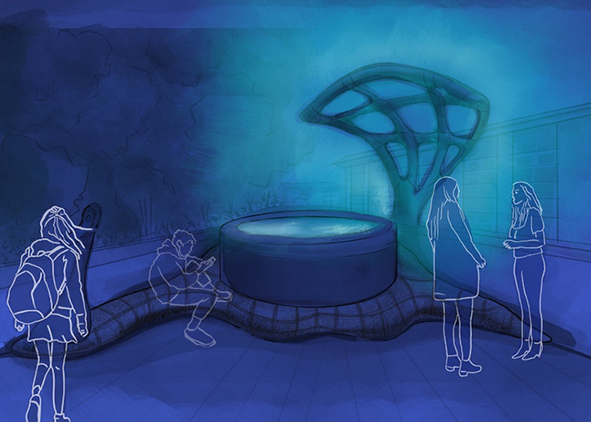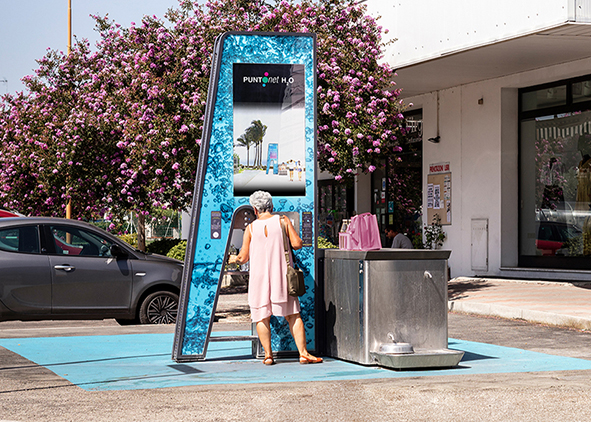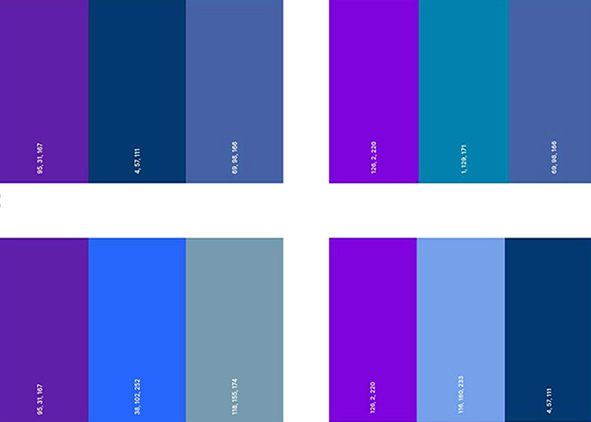
AGATHÓN
International Journal
of Architecture, Art and Design
ISSN (online) 2532-683X
ISSN (print) 2464-9309
Sulla rivista
AGATHÓN è una Rivista Scientifica Internazionale di Architettura, Arte e Design di tipo Open Access e indicizzata su SCOPUS e SCIMAGO, uno strumento di informazione e di formazione critica semestrale che si propone di contribuire alla crescita e alla diffusione della conoscenza delle tematiche dell'Area 08 e dell'Area 10; la Rivista intende pertanto costituire un luogo scientifico ove gli Autori, che abbiano svolto ricerche originali in materia di urbanistica, architettura, ingegneria, arte e design, possano trovare un’opportunità per diffondere i propri contributi. Ciascun numero della Rivista accoglie lavori di ricerca su di un tema specifico, lavori non pubblicati, né proposti per la pubblicazione ad altro editore.
I contributi, selezionati e valutati attraverso un double-blind peer review process, saranno pubblicati in lingua italiana e inglese, così da poter essere collocati nel più vasto contesto di ricerca internazionale. Principi fondanti della Rivista sono l’originalità/innovatività, la rilevanza dell’argomento trattato per l’avanzamento della conoscenza, la conoscenza e la capacità di utilizzo della letteratura, il rigore metodologico e la chiarezza espositiva, l’impatto nella comunità scientifica, ma anche l’agevole accessibilità e l’ampia diffusione degli articoli; inoltre la Rivista è aperta a ricerche speculative, empiriche e di natura descrittiva relative a fenomenologie che presentino caratteri di novità, almeno per taluni aspetti significativi. AGATHÓN è inserita dall’ANVUR nell’Elenco delle Riviste di Classe A | Area 08 – Architettura e Ingegneria e nell'Elenco delle Riviste Scientifiche Area 10 a partire dal Gennaio 2017.
LE SEZIONI DELLA RIVISTA | Gli articoli pubblicati sono inseriti in una delle seguenti sezioni:
"Focus" (a invito per Autori di chiara fama e/o esperti nella materia)
"Architettura" (progettazione architettonica e d’interni, urbanistica, paesaggio, ingegneria, tecnologia, storia, recupero, restauro, allestimento e museografia, rappresentazione)
"Arte" (moderna e contemporanea)
"Design" (per l’industria, l’artigianato e la comunicazione)
e sono classificati come "Essays & Viewpoint", "Research & Experimentation", "Review Articles" o "Dialogues".
AGATHÓN pubblica, sia in formato elettronico che a stampa, due numeri per anno, a Giugno e a Dicembre. Il primo numero è stato pubblicato nel Giugno 2017 e da allora i numeri programmati sono stati prodotti con regolarità.
Per incoraggiare la pubblicazione di contributi di Autori con affiliazione a Università ed Enti di Ricerca in Paesi classificati dalla Banca Mondiale come low-income and lower-middle income economies, AGATHÓN seleziona un massimo di due Autori a cui pubblicare gratuitamente il contributo, fatto salvo l’esito positivo del double-blind peer review process.
Gli articoli più letti negli ultimi 30 giorni
Ultimo numero

Il volume 18 di AGATHÓN dà seguito a quanto avviato nel precedente volume dedicato ai primi cinque Obiettivi dell’Agenda 2030, spostando ora il focus sui successivi tre SDG che, per densità di interdipendenze e urgenza della crisi, agiscono come snodi strutturali della transizione: Acqua pulita e servizi igienico-sanitari (SDG 6), Energia pulita e accessibile (SDG 7), Lavoro dignitoso e Crescita economica (SDG 8). I tre temi fanno parte dei 17 Obiettivi di Sviluppo Sostenibile (SDG), adottati nel settembre 2015 dagli Stati membri delle Nazioni Unite (UN, 2015) e promossi come appello a un’azione urgente in grado di coniugare prosperità, sviluppo equo e protezione del nostro Pianeta, tutto ciò mettendo in valore la cooperazione e i partenariati tra i diversi Paesi, tra Governi nazionali e Amministrazioni locali, tra Istituzioni pubbliche e Imprese private e tra società civile e singoli individui. Tuttavia, a distanza di soli cinque anni dalla data indicata per il loro raggiungimento, l’appello sembra non essere stato pienamente accolto, se non addirittura disatteso, e pertanto la comunità scientifica non può e non deve esimersi dal riflettere su ‘dove siamo arrivati’, ‘dove stiamo andando’ e ‘dove ancora potremmo essere in grado di arrivare’. Una valutazione dei progressi basata sui dati è stata fatta dal Global Sustainable Development Report che, in due successivi documenti (IGS, 2019, 2023), ha sollecitato un’adeguata correzione e un’urgente accelerazione delle politiche attuative senza le quali l’umanità si troverà ad affrontare periodi prolungati di crisi e incertezza, mettendo ulteriormente a rischio a livello globale il principio di ‘non lasciare indietro nessuno’ e la salvaguardia dell’intero ecosistema. Se il Rapporto del 2019 aveva rilevato che per alcuni obiettivi la comunità internazionale avrebbe dovuto accelerare il passo, mentre per molti altri aveva confermato che il mondo era sulla buona strada, la situazione fotografata dal Rapporto 2023 è estremamente differente in quanto denuncia che su alcuni obiettivi non si è accelerato abbastanza e su altri – sicurezza alimentare, azione per il clima e protezione della biodiversità – il mondo si sta ancora muovendo nella direzione sbagliata.
Sulla scorta di tali riflessioni il volume 18 di AGATHÓN, rivolgendosi alle aree disciplinari del Paesaggio, dell’Urbanistica, della Composizione Architettonica e Urbana, dell’Ingegneria, della Tecnologia dell’Architettura, del Design, del Restauro e Recupero e della Rappresentazione, ha selezionato una serie di contributi sul tema ‘Acqua pulita e servizi igienico-sanitari (SDG 6), Energia pulita e accessibile (SDG 7), Lavoro dignitoso e crescita economica (SDG 8) | Progetti, ricerche, sinergie e compromessi con gli SDG’ con l’intento di alimentare un confronto aperto attraverso la raccolta di saggi e riflessioni critiche, ricerche e sperimentazioni, progetti e interventi, di impronta innovativa, multidisciplinare e multiscalare che utilizzano un approccio sistemico e trattano aspetti di processo (progetto, produzione / realizzazione e gestione), metodologie e modelli di valutazione ex-ante ed ex-post, superamento di limiti, gap e barriere, valorizzando le sinergie e limitando i compromessi con altri obiettivi.
L’ambiente costruito infatti interagisce con ogni obiettivo (Thorne and Duran, 2016), ma al contempo rientra tra le attuali sfide in quanto da un lato è un grande consumatore di energia e risorse naturali e un incessante produttore di gas nocivi e rifiuti, dall’altro il modo in cui interveniamo può esacerbare disuguaglianze e incidere sulla salute umana; ciò assume particolare rilevanza nelle città, la cui importanza sia in termini di vulnerabilità che di opportunità di crescita è sottintesa in tutti gli SDG, soprattutto in considerazione del fatto che entro il 2050 circa il 70% della popolazione mondiale vivrà in aree urbanizzate (UN-Habitat, 2022). Ancora una volta ciò che risulta necessario e urgente è un’azione antropica strategicamente pianificata, progettata e attuata coerentemente con più SDG in grado di garantire il miglioramento della qualità della vita, la sostenibilità, l’equità sociale, la salute e la resilienza di una comunità. In tale ottica i saggi e le ricerche pubblicati trattano i primi cinque Obiettivi di Sviluppo Sostenibile nella consapevolezza che povertà, fame, salute e benessere, istruzione di qualità e parità di genere non siano domini separati, ma campi di azione e riflessione interconnessi, tra loro e con gli altri Obiettivi, su cui la progettazione – intesa nella sua estensione urbanistica, paesaggistica, architettonica e tecnologica – può e deve esercitare un’azione sistemica. L’editoriale tenta di restituire questa complessità, evidenziando – per ciascun contributo – il tema affrontato, l’ambito disciplinare di riferimento, le scale di progetto coinvolte, le tipologie di azione impiegate e, soprattutto, l’importanza e la trasferibilità delle soluzioni proposte.
Nel loro insieme, i contributi raccolti in questo numero restituiscono un quadro nel quale acqua, energia e lavoro non sono più tre semplici obiettivi dell’Agenda 2030, ma i vertici di un unico campo di forze che attraversa paesaggi produttivi, città, architetture, filiere materiali e infrastrutture digitali. L’insieme dei contributi mostra come la questione idrico-energetica non possa essere confinata né alla scala tecnica del dettaglio né a quella astratta delle grandi strategie, ma richieda una continua interazione tra visione e dispositivo, tra concetto e prova sul campo.
Una prima evidenza riguarda il modo in cui i contributi ridisegnano il rapporto tra scale e discipline. L’acqua compare come matrice di progetto nel paesaggio, nella città, nell’edificio e fino al micro-dispositivo urbano; l’energia come vincolo e risorsa nella forma degli insediamenti, nei sistemi bioclimatici, nelle tecnologie di stoccaggio e nelle scelte tipologiche; il lavoro come dimensione spesso implicita, ma decisiva nelle cooperative rurali, nelle filiere dei materiali a base biologica, nei servizi della cura, nei mestieri della manutenzione e nelle nuove professionalità digitali. Architettura, Urbanistica, Tecnologia, Design del prodotto, del servizio e della comunicazione, studi socio-economici e politiche pubbliche si contaminano: gli studi più convincenti e di maggiore impatto sono quelli che accettano di lavorare su più fronti contemporaneamente – progettuale, valutativo, organizzativo – mettendo alla prova ipotesi teoriche su casi concreti e viceversa.
Un secondo tratto comune è la centralità delle metodologie. Rispetto a narrazioni ancora diffuse che affidano la transizione a un elenco di ‘buone pratiche’ i contributi di questo volume insistono sulla costruzione di strumenti: tassonomie e abachi per progettare con l’acqua, protocolli operativi per integrare SDG nelle fasi di progetto, tool per la gestione delle acque meteoriche, set di parametri per i PED, procedure LCA e S-LCA, matrici 4R-SDG, sistemi di indicatori per smartness e gemelli digitali, framework per leggere la circolarità nelle fibre naturali e nei settori produttivi. La ricerca non si esaurisce così nell’enunciazione di principi, ma si incarica di tradurli in sequenze operative e in apparati di misura che, pur con i loro limiti, rappresentano il prerequisito per qualsiasi scalabilità. L’originalità di molti contributi sta proprio nel mettere in dialogo strumenti nati in domini diversi – dal Design dei servizi alla bibliometria, dalla simulazione termo-energetica alle scienze dei dati – per costruire letture più robuste di sinergie e compromessi.
In terzo luogo i contributi invitano a valutare con maggiore attenzione la dimensione del compromesso. Lungi dal proporre una visione armonica degli SDG molte ricerche mostrano tensioni difficili da sciogliere: tra produzione energetica e uso del suolo agricolo, tra rigenerazione ecologica e dinamiche di rendita, tra comfort edilizio e vincoli morfologici, tra promesse dei biomateriali e condizioni reali di lavoro nelle filiere, tra sofisticazione degli indicatori e capacità istituzionale di usarli, tra circolarità e precarietà in settori come la moda. È un dato che va letto non come segno di debolezza, ma di maturazione: la transizione che emerge da questi contributi è meno rassicurante ma più credibile, perché riconosce che ogni scelta comporta perdite e guadagni differenziali e che il compito del progetto – e degli strumenti valutativi che lo accompagnano – è rendere espliciti questi compromessi senza occultarli sotto etichette generiche di sostenibilità. Il contributo forse più importante del volume riguarda la trasferibilità.
Quasi tutte le ricerche, pur radicate in contesti specifici, lavorano per identificare elementi che possano ‘essere trasferiti’: matrici di compatibilità, descrittori di riconnettività, checklist di durabilità, sequenze per la prototipazione e il test, modelli di governance, dispositivi di comunicazione visuale, processi di co-progettazione e criteri per integrare dimensioni ambientali e sociali nella valutazione costituiscono nuove infrastrutture di pensiero e di azione che possono essere adattate criticamente ad altri territori e settori. Il volume in questo senso mostra una tensione costante a uscire dal perimetro dei casi per costruire ‘una cassetta degli attrezzi concettuali’ che restino utili anche quando lo scenario cambia. Accanto a questi punti di forza emergono anche i limiti di alcuni studi: lo sguardo resta in larga misura nell’ambito euro-mediterraneo, con poche incursioni in contesti extraeuropei; molte sperimentazioni si collocano in condizioni relativamente protette e lasciano intravedere, ma non sempre affrontano, le difficoltà di implementazione in sistemi amministrativi frammentati o in territori deboli; il tema delle disuguaglianze – pur presente – potrebbe essere ulteriormente approfondito, soprattutto rispetto ai lavoratori più vulnerabili delle filiere globali e alle popolazioni urbane e rurali meno rappresentate. Anche la dimensione temporale rimane in alcuni casi compressa: cicli di monitoraggio brevi, valutazioni ex ante che attendono conferme nel lungo periodo, modelli di impresa e di governance ancora da mettere alla prova su orizzonti decennali.
Nel complesso i contributi pubblicati restituiscono bene l’idea che le discipline dell’architettura possono assumere un ruolo strategico per l’Agenda 2030, intervenendo su scelte tecnologiche, forme spaziali, modelli economici e immaginari collettivi. L’acqua, l’energia e il lavoro dignitoso non sono qui semplici ‘temi’ da rappresentare, ma materiali di progetto e di ricerca che ridisegnano le priorità della disciplina pertanto, in continuità con il volume precedente, l’editoriale invita a chiedersi dove sia necessario approfondire, su quali scale concentrare gli sforzi e quali alleanze disciplinari e istituzionali attivare per trasformare gli SDG da enunciati programmatici in pratiche operative.

